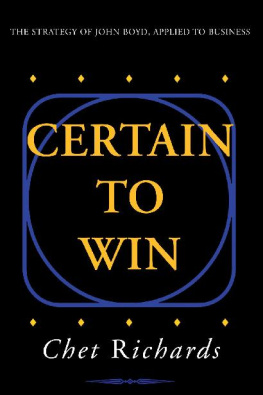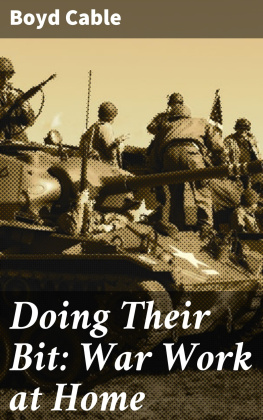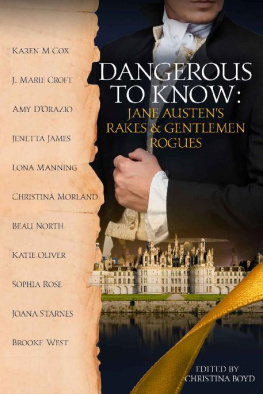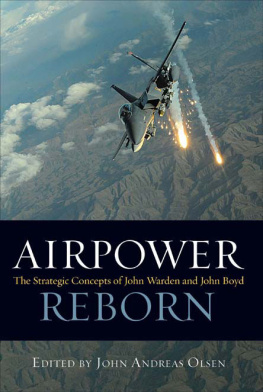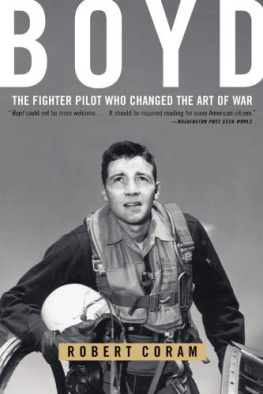John Boyd is often known exclusively for the so-called OODA loop model he developed. This model refers to a decision-making process and to the idea that military victory goes to the side that can complete the cycle from observation to action the fastest. This book aims to redress this state of affairs and re-examines John Boyds original contribution to strategic theory. By highlighting diverse sources that shaped Boyds thinking, and by offering a comprehensive overview of Boyds work, this volume demonstrates that the common interpretation of the meaning of Boyds OODA loop concept is incomplete. It also shows that Boyds work is much more comprehensive, richer and deeper than is generally thought. With his ideas featuring in the literature on Network Centric Warfare, a key element of the US and NATOs so-called military transformation programmes, as well as in the debate on Fourth Generation Warfare, Boyd continues to exert a strong influence on Western military thinking. Dr Osinga demonstrates how Boyds work can help us to understand the new strategic threats in the post-9/11 world, and establishes why John Boyd should be regarded as one of the most important (post)modern strategic theorists.
Series: strategy and history
Edited by Colin Gray and Williamson Murray
ISSN: 1473-6403
This new series will focus on the theory and practice of strategy. Following Clausewitz, strategy has been understood to mean the use made of force, and the threat of the use of force, for the ends of policy. This series is as interested in ideas as in historical cases of grand strategy and military strategy in action. All historical periods, near and past, and even future, are of interest. In addition to original monographs, the series will from time to time publish edited reprints of neglected classics as well as collections of essays.
1 Military Logistics and Strategic Performance
Thomas M. Kane
2 Strategy for Chaos
Revolutions in military affairs and the evidence of history
Colin Gray
3 The Myth of Inevitable US Defeat in Vietnam
C. Dale Walton
4 Astropolitik
Classical geopolitics in the space age
Everett C. Dolman
5 Anglo-American Strategic Relations and the Far East, 19331939
Imperial crossroads
Greg Kennedy
6 Pure Strategy
Power and principle in the space and information age
Everett C. Dolman
7 The Red Army, 19181941
From vanguard of world revolution to US ally
Earl F. Ziemke
8 Britain and Ballistic Missile Defence, 19422002
Jeremy Stocker
9 The Nature of War in the Information Age
Clausewitzian future
David J. Lonsdale
10 Strategy as Social Science
Thomas Schelling and the nuclear age
Robert Ayson
11 Warfighting and Disruptive Technologies
Disguising innovation
Terry Pierce
12 The Fog of Peace and War Planning
Military and strategic planning under uncertainty
Edited by Talbot C. Imlay and Monica Duffy Toft
13 US Army Intervention Policy and Army Innovation
From Vietnam to Iraq
Richard Lock-Pullan
14 German Disarmament After World War I
The diplomacy of international arms inspection 19201931
Richard J. Shuster
15 Strategy and History
Essays on theory and practice
Colin S. Gray
16 The German 1918 Offensives
A case study in the operational level of war
David T. Zabecki
17 Special Operations and Strategy
From World War II to the War on Terrorism
James D. Kiras
18 Science, Strategy and War
The strategic theory of John Boyd
Frans P.B. Osinga
19 US Defense Strategy from Vietnam to Operation Iraqi Freedom
Military innovation and the new American way of war, 19732003
Robert R. Tomes
Science, Strategy and War
The strategic theory of John Boyd
Frans P.B. Osinga
First published 2007
by Routledge
2 Park Square, Milton Park, Abingdon, Oxon OX14 4RN
Simultaneously published in the USA and Canada
by Routledge
270 Madison Ave, New York, NY 10016
Routledge is an imprint of the Taylor & Francis Group, an informa business
This edition published in the Taylor & Francis e-Library, 2006.
To purchase your own copy of this or any of Taylor & Francis or Routledges collection of thousands of eBooks please go to www.eBookstore.tandf.co.uk.
2007 Frans P.B. Osinga
All rights reserved. No part of this book may be reprinted or reproduced or utilized in any form or by any electronic, mechanical, or other means, now known or hereafter invented, including photocopying and recording, or in any information storage or retrieval system, without permission in writing from the publishers.
British Library Cataloguing in Publication Data
A catalogue record for this book is available from the British Library
Library of Congress Cataloging in Publication Data
A catalog record for this book has been requested
ISBN 0-203-08886-7 Master e-book ISBN
ISBN10: 0-415-37103-1 (hbk)
ISBN10: 0-203-08886-7 (ebk)
ISBN13: 978-0-415-37013-2 (hbk)
ISBN13: 978-0-203-08886-9 (ebk)
For Ankie, Timon, Femmeke and Minke.Who else?
We are survival machines.
Richard Dawkins
Strategy is the mode of survival of a society.
Henry Kissinger
He who can handle the quickest rate of change survives.
John Boyd
Figures
Boxes
Acknowledgments
This book took off during my stay at the School of Advanced Airpower Studies in 199899. Thanks in particular to professor Dennis Drew, my mentor at SAAS who said I think youre on to something, thus providing me with the necessary dose of self-confidence for embarking on the academic trail. The Clingendael Institute of International Relations in The Hague has been my home from 2000 till 2005. A special word of appreciation for Professor Alfred van Staden, then director of the Clingendael Institute, for maintaining faith in the project, for his broad perspective, as well as for his patience. From the head of the research department, Professor Jan Rood, I received more latitude to conduct research in a wide variety of topics than I could have wished for. Professor Rob de Wijk, director of the Clingendael Center for Strategic Studies, has assisted me throughout the development of this book with frequent pointed remarks. I have also sincerely benefited from the personal encouragement and support I received from the senior leadership of the Royal Netherlands Air Force in the past decade. I am deeply indebted to LtGen Droste, LtGen Berlijn, LtGen Starink, MGen Hilderink, MGen Melker, and MGen Meulman. I am grateful also to LtCol. Paul Ducheine and Col. Peter Wijninga, who have been brothers in intellectual arms in the past years. I would like to thank Barry Watts, Chet Richards and Dick Safranski for providing me with very valuable comments and suggestions on various drafts of this book, based on their personal acquaintance with John Boyd. Mary Holton-Boyd was very kind in permitting me to incorporate slides from Boyds work, which greatly help in explaining his ideas. The final word of gratitude goes to professor Grant Hammond, of the Center for Strategy and Technology of the Air War College, and author of the first Boyd biography. He has been the mental and moral driving force in the development of this book since 1999. Indeed, I even owe the title of the book to him.



